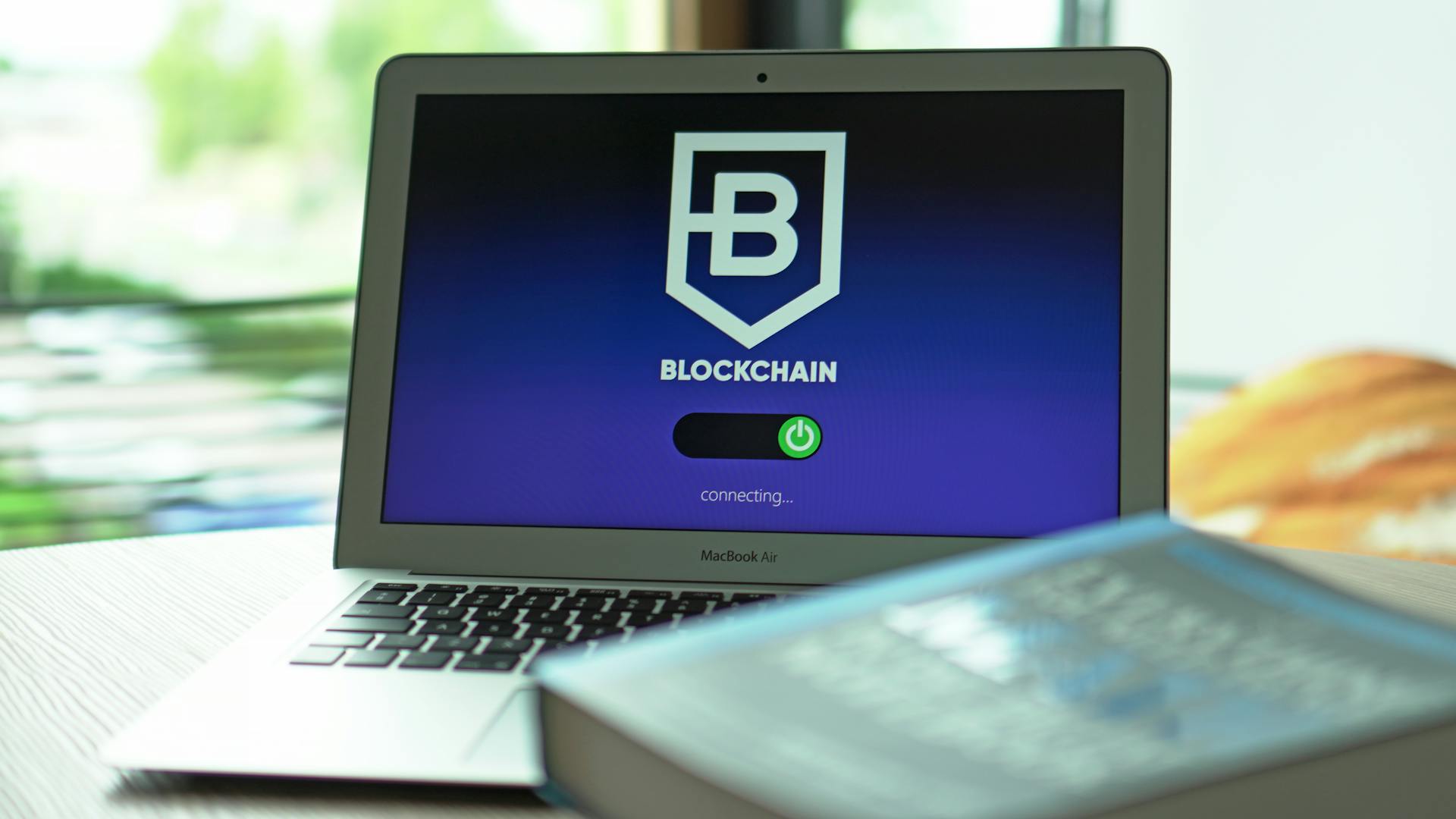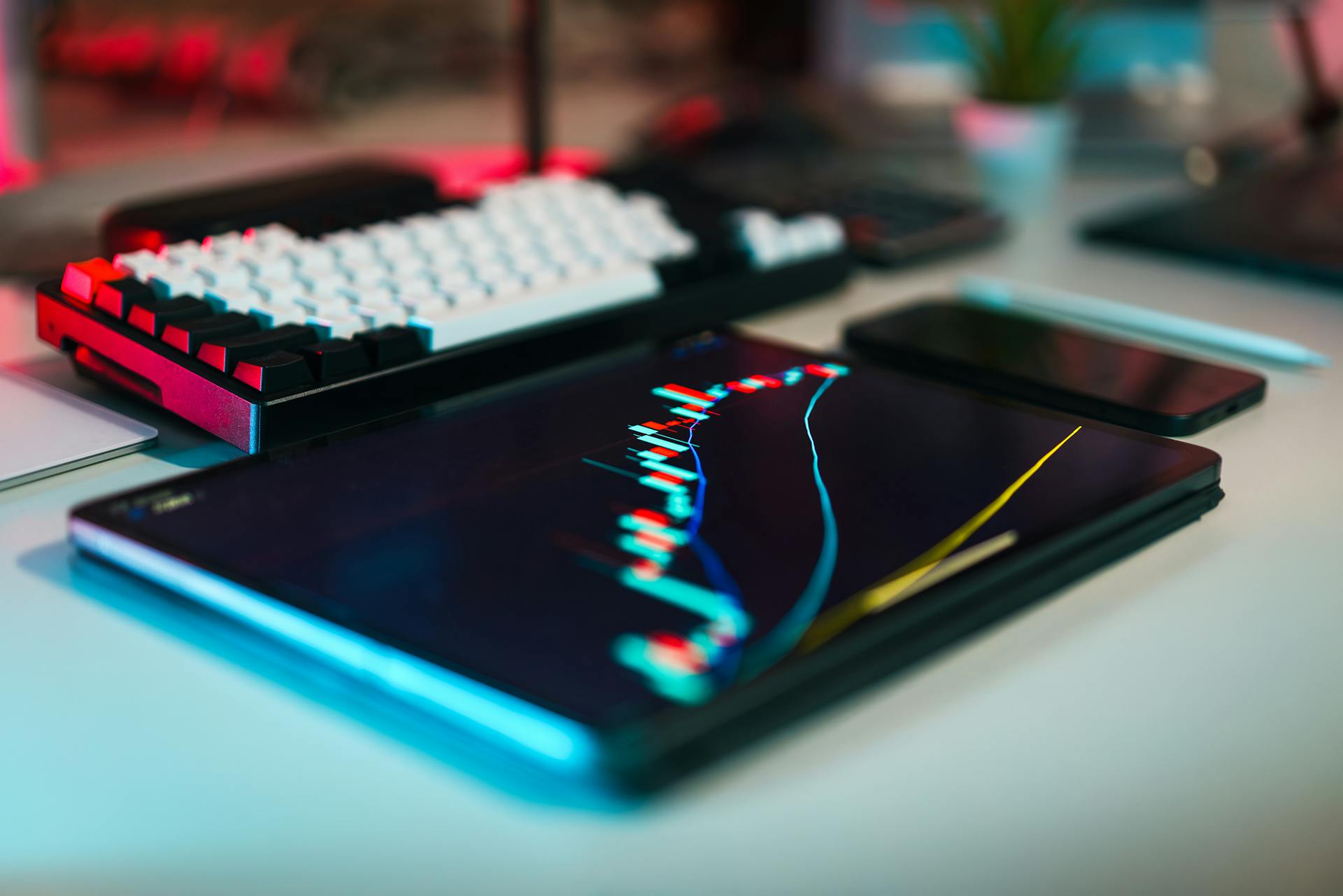
Developing a crypto wallet involves creating a secure and user-friendly interface for storing, sending, and receiving cryptocurrencies. This can be achieved by integrating a robust backend infrastructure with a seamless frontend experience.
To start, you'll need to choose a programming language for your wallet's backend. According to our article, popular choices include JavaScript, Python, and Go. Each of these languages has its own strengths and weaknesses, so it's essential to select the one that best fits your project's needs.
A well-designed wallet should also include features like multi-signature support, which allows users to add extra layers of security to their transactions. This can be achieved by implementing the BIP32 standard, which enables hierarchical deterministic wallets.
Types of Crypto Wallets
There are multiple crypto wallet types that offer unique benefits and drawbacks. Choosing the right wallet depends on your needs, whether you prioritize convenience, security, or long-term storage.
A custodial wallet is managed by a third party, like a cryptocurrency exchange, making it easy to use without worrying about security details. You don't have to create a crypto wallet from scratch, as the service takes care of everything.
Intriguing read: Crypto Wallet Security
Non-custodial wallets give you complete control of your P-keys and funds, making them perfect for users who want a self-custody wallet and full independence. This type of wallet is ideal for users who prioritize privacy and control.
The functionality and technologies required for crypto app development will mainly depend on the type of wallet you choose. Here are the main types of crypto wallets:
- Cold Wallets (Hardware Wallets): physical devices designed to store cryptocurrency offline, providing an extra layer of security.
- Hot Wallets: software-based wallets that are connected to the internet, providing seamless access to cryptocurrencies.
- Hybrid Wallets: solutions that combine elements of both cold and hot wallets, offering enhanced security and easier asset access.
Market Share Rising
The market share of crypto wallets is rising, and it's not hard to see why. The significant rise of digital assets has driven the market demand for secure storage of digital assets as well as on-chain activities.
The number of crypto wallet owners is increasing rapidly, with over 84 million people using crypto wallets globally in 2022. This is a significant jump from 76.32 million in 2021, according to Polaris Market Research.
The average cryptocurrency ownership rate is now 6.8% in 2024, with more than 560 million people using crypto assets globally. This growing adoption is creating a large market for crypto wallets.
Intriguing read: Digital Wallet
Types of
Choosing the right crypto wallet depends on your needs, whether you prioritize convenience, security, or long-term storage.
There are multiple types of crypto wallets, each with unique benefits and drawbacks. Some wallets are designed for convenience, while others prioritize security or long-term storage.
Non-custodial wallets give you complete control over your private keys and funds, making them perfect for users who want a self-custody wallet and full independence. These wallets require careful management of private keys, which can be a challenge.
Here are some examples of non-custodial wallets: MetaMask, Trust Wallet, and Exodus.
Cold wallets, also known as hardware wallets, store cryptocurrency offline and provide an extra layer of security by keeping private keys completely isolated from the Internet. This makes them more resistant to online hacks or breaches.
Hot wallets are software-based wallets that are connected to the internet, providing seamless access to cryptocurrencies. However, they are considered less secure than cold wallets, as they require an ongoing Internet connection.
Hybrid wallets combine elements of both cold and hot wallets, storing the majority of funds offline for enhanced security while keeping smaller portions online for easier asset access and transaction processing.
You might like: Hot vs Cold Wallet
Custodial
Custodial wallets are a great option for beginners who want simplicity, but it's essential to understand the trade-offs. They're managed by a third party, like a cryptocurrency exchange, which holds your private keys.
One of the main advantages of custodial wallets is that they're easy to use. You don't have to create a crypto wallet from scratch, as the service takes care of everything.
However, you don't control your funds, which can be a concern for some users. This means you're relying on the provider for security and access to your money.
Custodial wallets often have recovery options in place, so if you lose access to your account, you can regain control of your funds. But, this also means you're vulnerable to exchange hacks, which can be a significant risk.
Here's a summary of the pros and cons of custodial wallets:
Crypto Wallet Development Process
The crypto wallet development process begins with a solid idea, where you identify a problem and solution in the cryptocurrency industry. This is a crucial step, as it sets the foundation for your product.
To validate your idea, gather feedback from potential users to understand their pain points and preferences. This information will help you define the features your wallet should have. Conduct competitive research to see if solutions already exist, and analyze how you can improve upon them.
You'll also need to choose a suitable development language for your blockchain wallet. The most popular development languages are C++, Java, Python, JavaScript, and so on. C++ and Java languages support the most blockchain wallet types, making them a recommended choice for development.
A unique perspective: How to Develop Blockchain Applications
Discovery Phase
The discovery phase of crypto wallet development is where it all begins. This is the time to identify a problem and come up with a solution that can improve the user experience.
To start, conduct competitive research to see if solutions already exist. If they do, analyze how you can improve upon them and make your product more appealing.
You'll also want to validate your idea by gathering feedback from potential users to understand their pain points and preferences. This will help you define the features your wallet should have.
C++, Java, Python, and JavaScript are popular development languages for blockchain wallets. However, C++ and Java languages support the most blockchain wallet types, making them a good choice for development.
Here are some key points to consider during the discovery phase:
- Identify a problem and solution.
- Conduct competitive research.
- Validate your idea by gathering feedback from potential users.
- Choose a suitable development language, such as C++ or Java.
Cost Breakdown
The cost of developing a crypto wallet app can be broken down into various components, each with its own estimated cost. The backend development cost can range from $10,000 to $15,000.
To give you a better idea, let's take a look at the estimated costs for each platform. Developing an Android app can cost between $27,000 and $32,000, while an iOS app can cost between $20,000 and $28,000.
The cost of designing a crypto wallet app can range from $8,000 to $10,000. This includes creating wireframes, designing the user interface, and ensuring that the app is visually appealing.
Quality assurance and project management costs can range from $5,000 to $8,000. This includes testing the app, identifying bugs, and ensuring that the app meets the required standards.
Curious to learn more? Check out: Crypto Exchange Development Cost
Here's a breakdown of the estimated costs for each component:
The total cost of developing a crypto wallet app can range from $90,000 to $100,000. This estimate takes into account the costs of backend development, designing, testing, and project management.
Stay Compliant
Staying compliant with regulatory standards is crucial in crypto wallet development. This ensures that your wallet adheres to the legal and regulatory requirements in the jurisdictions where it will be used.
To stay compliant, you should adhere to the legal and regulatory requirements in the jurisdictions where your wallet will be used. This includes implementing necessary compliance measures like Know Your Customer (KYC) and Anti-Money Laundering (AML) protocols, especially if your wallet integrates features similar to a crypto exchange.
The General Data Protection Regulation (GDPR) is a significant regulation that affects data protection, and your wallet should comply with these regulations to avoid legal repercussions. Regularly keeping abreast of changes in laws related to data protection is essential to ensure your wallet remains compliant.
Here are some key regulatory requirements to consider:
By staying compliant with regulatory standards, you can ensure that your crypto wallet is secure, trustworthy, and compliant with the laws and regulations in the jurisdictions where it will be used.
Blockchain Integration
Blockchain integration is a crucial step in crypto wallet development. To integrate with blockchain networks, you need to connect your wallet to networks like Bitcoin or Ethereum, enabling users to perform crypto transactions.
This integration also requires features that help users set up your wallet easily after downloading it. Make sure to include these features to ensure a smooth user experience.
To maximize the performance of your project, it's essential to understand the fundamentals of blockchain architecture, different consensus mechanisms, and the specific features of cryptocurrencies.
Blockchain Integration
To integrate blockchain technology into your project, you'll need to review the latest blockchain and cryptocurrency concepts. This will provide a solid foundation during the actual development process.
You should understand the fundamentals of blockchain architecture, different consensus mechanisms, and the specific features of cryptocurrencies. This knowledge will help you maximize the performance of your project.
To connect your wallet to blockchain networks, you'll need to integrate with networks like Bitcoin or Ethereum. This integration enables users to perform crypto transactions such as sending and receiving funds.
Make sure to include features that help users set up your wallet easily after downloading it. Utilize reputable APIs provided by blockchain networks to provide high-level reliability and development support.
These APIs offer standardized methods to interact with the blockchain, making the integration process smoother and more efficient. The entire purpose of implementing blockchain technology is to promote safer and more secure transactions.
Blockchain Cost Factors
The cost of blockchain integration can be a significant factor in your project's overall budget. The size of the crypto wallet app is a major parameter that affects the overall cost, with more features requiring a larger app size and thus a higher cost.
Worth a look: E Wallet App Development Company
A simple crypto wallet app with a basic feature list can cost around $25,000 to $40,000. The design of the crypto wallet also plays a crucial role, with non-complex and attractive designs being essential for success. An effective UI/UX design plan will cost more, but it's worth it in the long run.
The team size of the blockchain app development company you choose also impacts the cost, with a full-fledged team of project managers, designers, and developers increasing the overall cost. However, their professional expertise will result in a strong product with a unique user experience.
A standard team for cryptocurrency wallet app development includes a project manager, two backend developers, two iOS/Android developers, a designer, and one to two quality analysts. The technology stack used for development also affects the overall cost, with a modern tech stack putting your mobile app at the forefront of digital innovations.
Here's a breakdown of the estimated costs based on app complexity and time frame:
Design and Development
Designing a crypto wallet requires careful planning, including outlining the features you want to include. This may involve deciding whether to allow users to buy crypto directly from your app, and considering how users will create a wallet and what security measures you'll implement.
To ensure your wallet is user-friendly and secure, focus on a strong design that balances functionality with ease of use. This is key, according to experts who recommend a user-centric approach to crypto wallet development.
When choosing a technology stack, select languages and frameworks that align with your project's requirements and business goals. For example, JavaScript is a popular choice for web-based wallets, while Java/Kotlin are often used for mobile apps on Android or iOS.
A different take: Ledger - Nano S plus Crypto Hardware Wallet
Plan Your Features
Planning your features is a crucial step in designing and developing a crypto wallet app. It helps you understand what you want to achieve and what users will expect from your app.
A fresh viewpoint: How to Create a Crypto Wallet App
To start, think about the kind of wallet you want to create, such as whether it will support only one cryptocurrency or several. You should also decide if users will need to create an account to use your wallet. Planning these details is a crucial part of crypto wallet app development.
Consider what features you want to include, such as the ability to buy crypto directly from your app. You'll also need to think about how users will create a wallet and what security measures you'll implement. Focusing on user-friendly design and strong security is key.
Some essential features to include are outlined below:
- Buy crypto directly from the app
- Secure wallet creation and management
- Multi-chain compatibility
- Admin panel for streamlined processes
- Third-party service integration
These features will help you create a robust and user-friendly crypto wallet app. By planning your features carefully, you'll be able to create an app that meets the needs of your users and sets you apart from the competition.
For more insights, see: How to Create a Smart Contract
User Authentication
User authentication is a crucial feature that ensures only authorized individuals can access the wallet. It's especially important for meeting crypto compliance standards like AML and KYC.
Typically, user authentication is implemented through secured login credentials, biometric authentication, or multi-factor authentication (MFA), which prevents third-party access to crypto wallets. This is a complex process that requires expertise in the latest authentication protocols and security standards.
From a technical standpoint, setting up a secure user authentication process is a challenging task. Adding Google Two-Factor Authentication, such as with Google Two-Step Verification, can add a security layer to the app.
User authentication is exceptionally important for meeting various crypto compliance standards. It's a key aspect of designing a secure crypto wallet.
Implement and Refine
Implementing and refining your crypto wallet is a crucial step in its development. You've got to pay attention to user feedback and adjust the functionality to meet their needs.
After releasing your app, it's essential to conduct user testing and feedback sessions to refine your designs, as mentioned in the UX/UI/CX design section. This will help you identify areas for improvement and make necessary changes.
Continuous refinement and updates based on user input will help ensure the product's success from a long-term perspective, as stated in the "8. Implement & Refine Your Application" section. This is why it's vital to catch up with the latest industry innovations and adapt your wallet accordingly.
To refine your application, you should focus on user-centric features, such as creating interactive prototypes to visualize the user journey, as highlighted in the UX/UI/CX design section. This will enable you to create a seamless user experience across all devices.
Here's a list of key considerations for refining your crypto wallet:
- Conduct user testing and feedback sessions
- Implement user-centric features
- Create interactive prototypes
- Catch up with the latest industry innovations
By following these steps, you'll be able to refine your crypto wallet and ensure it meets the needs of your users.
Scalability with Cloud Technology
Choosing the right cloud technology is crucial for developing a crypto app that can scale. If you're designing a web platform, using PaaS (Platform-as-a-service) is a great way to ensure success.
To build a scalable crypto web app, utilize cloud platforms like AWS, Google Cloud, or Azure. These platforms provide top-level user experiences.
Harnessing cloud technology allows businesses to allocate computation resources based on user demand, providing seamless performance even during peak usage. This is especially important for crypto wallet applications.
By using cloud solutions, businesses can effectively manage user demand and provide a seamless experience. This is a key factor in the success of any crypto app.
Frequently Asked Questions
How much does it cost to develop a crypto wallet?
The cost to develop a crypto wallet can range from $25,000 to $200,000, depending on features and complexity. Learn more about the factors that influence the final cost of a crypto wallet development project.
How are crypto wallets generated?
A crypto wallet is generated using a unique, randomly generated number that's converted into a private key through the cryptocurrency's specific cryptography algorithm. This process ensures a secure and unique wallet for each user.
Sources
- https://www.antiersolutions.com/cryptocurrency-wallet-app-development/
- https://attractgroup.com/blog/how-to-create-a-crypto-wallet-best-practices-for-developers/
- https://appinventiv.com/blog/cost-to-develop-crypto-wallet-app/
- https://medium.com/ideasoft-io/a-comprehensive-guide-on-crypto-wallet-development-b2a2e5d48bb7
- https://soloway.tech/blog/crypto-wallet-app-development-and-integration/
Featured Images: pexels.com


